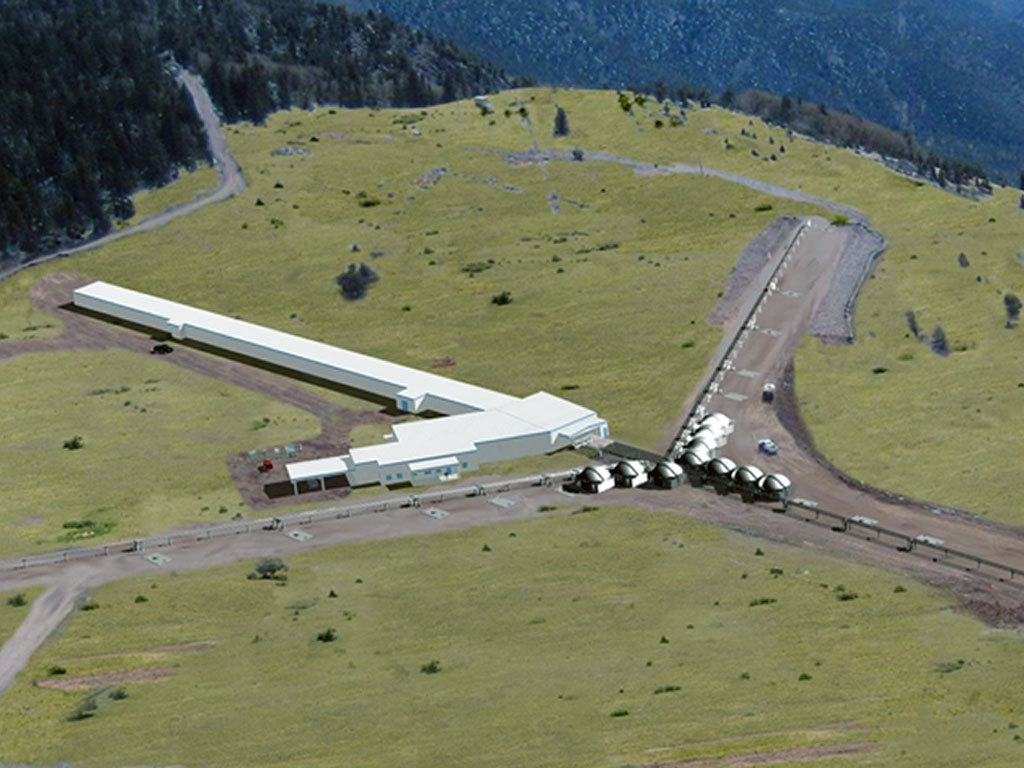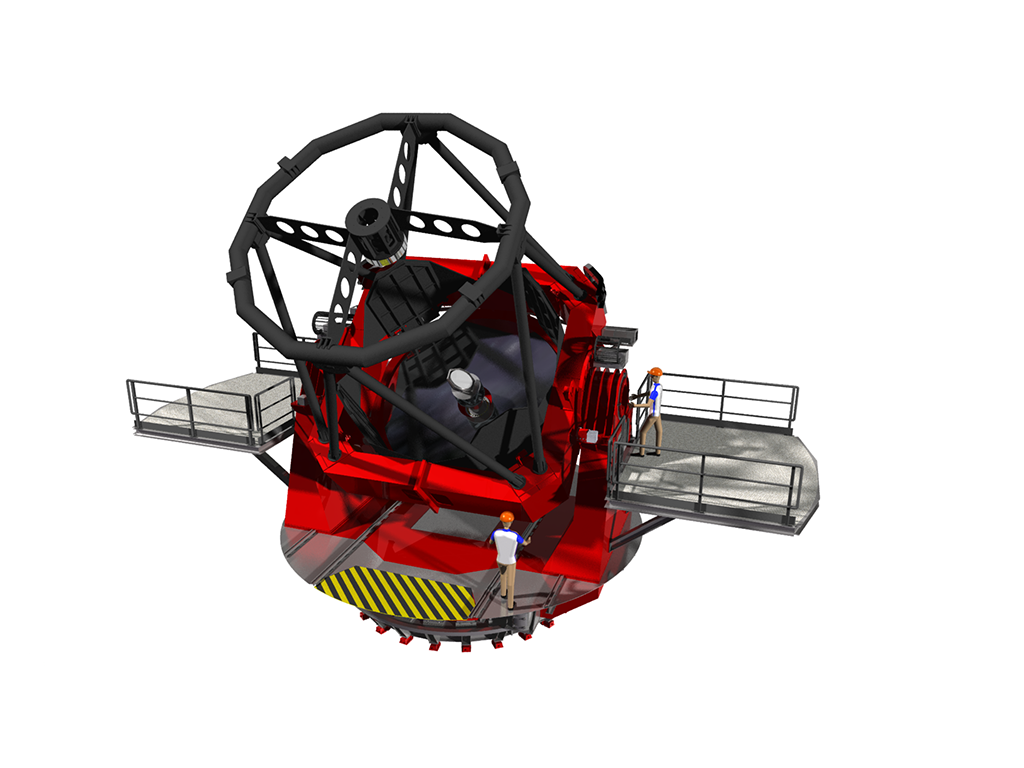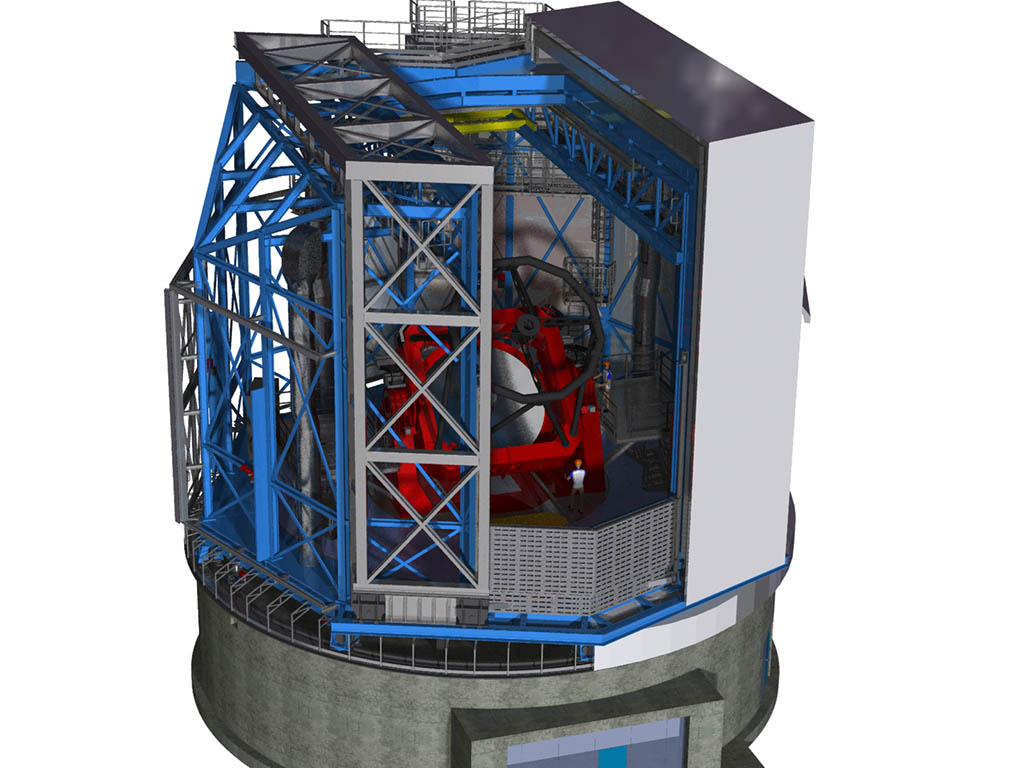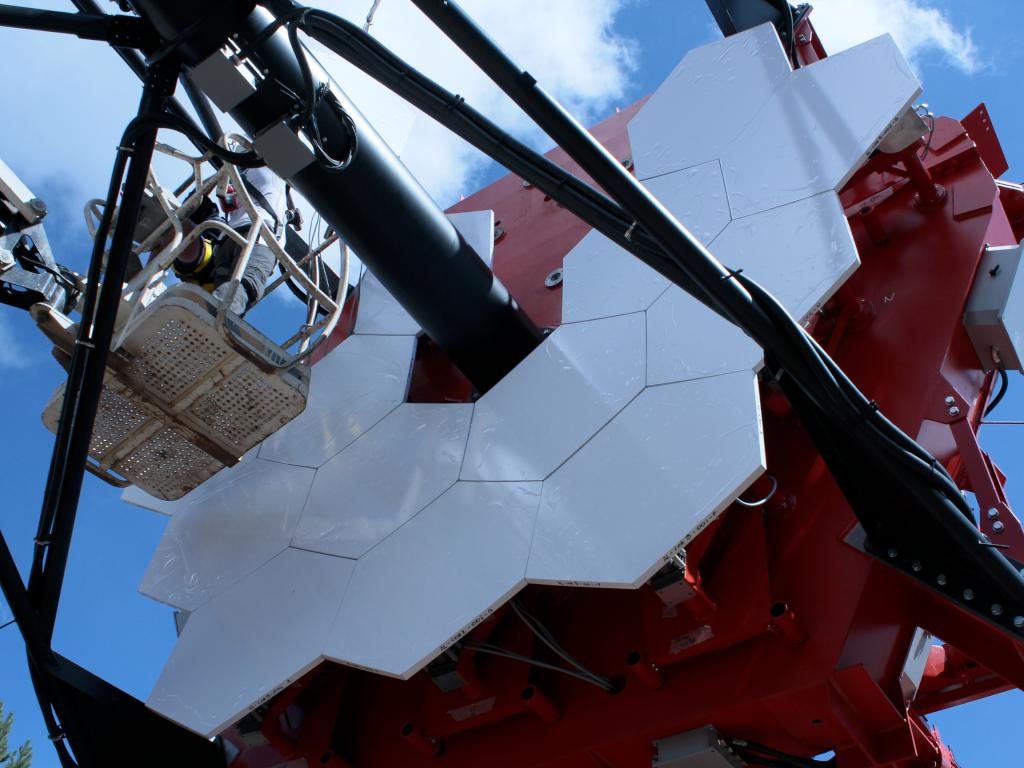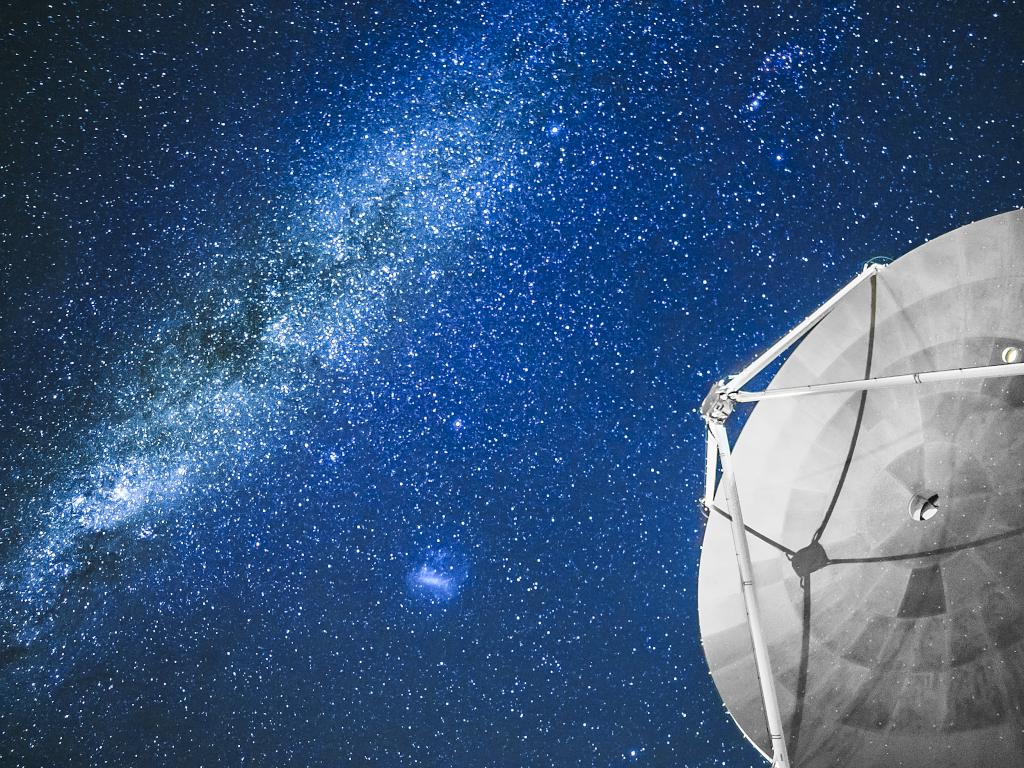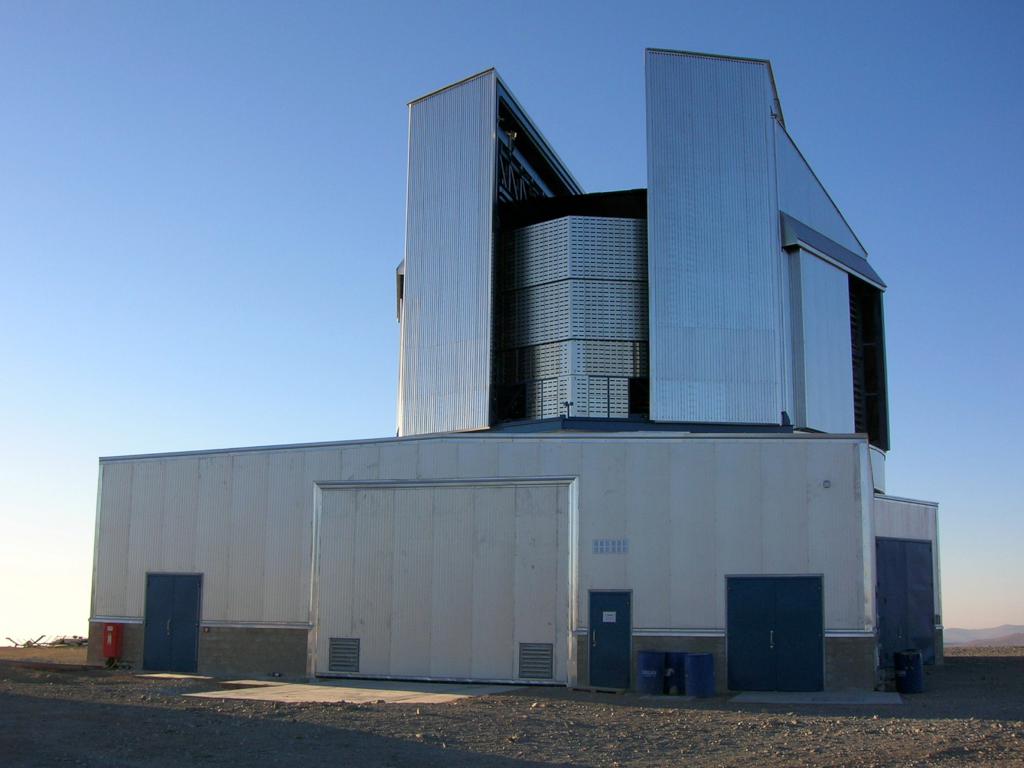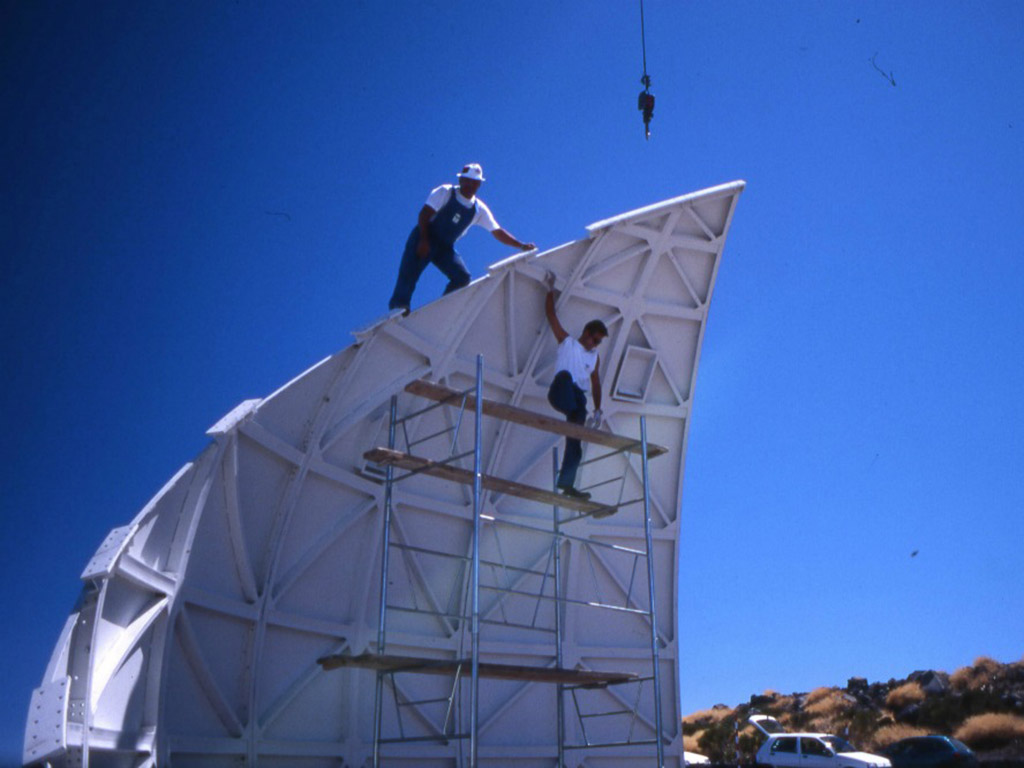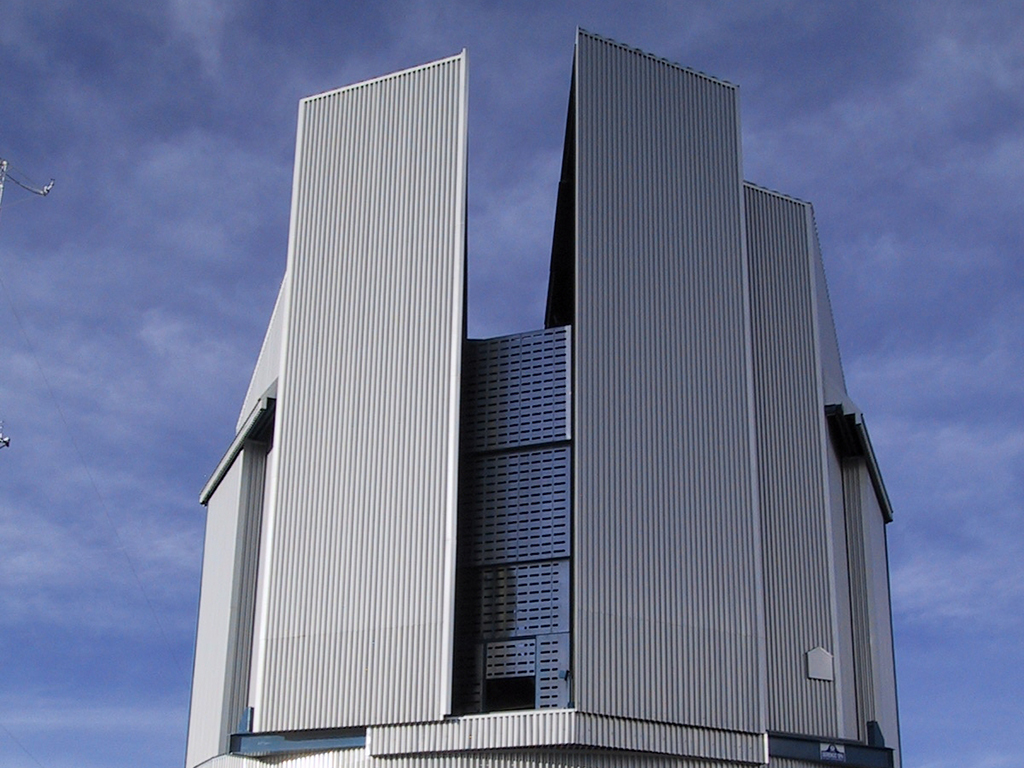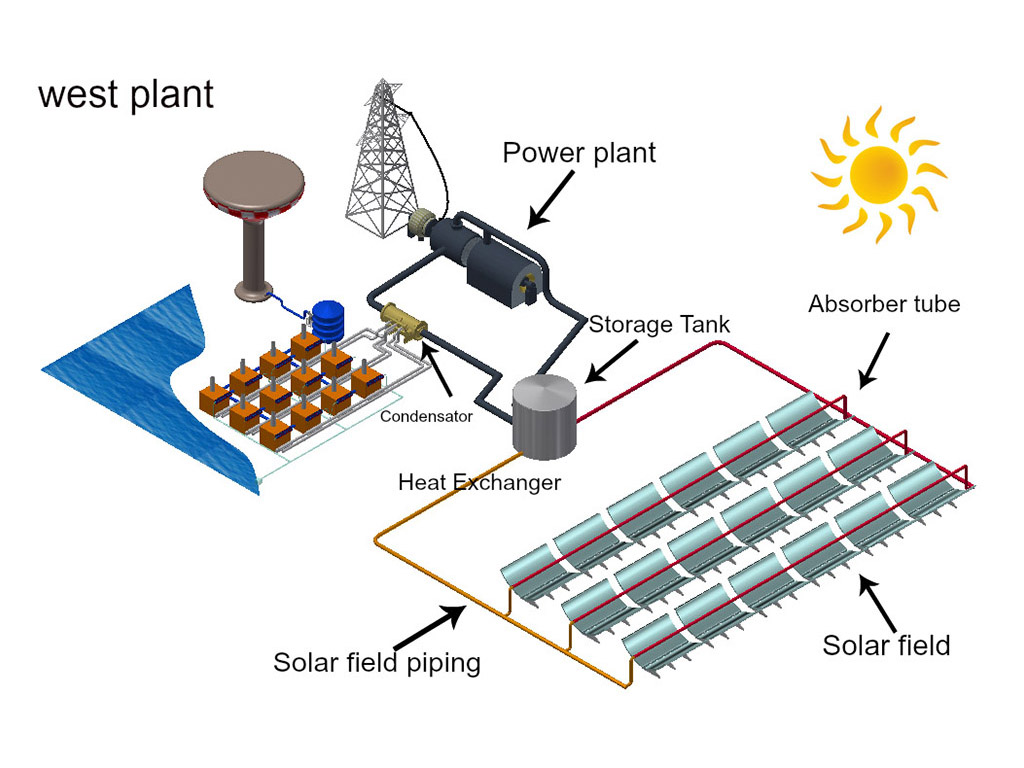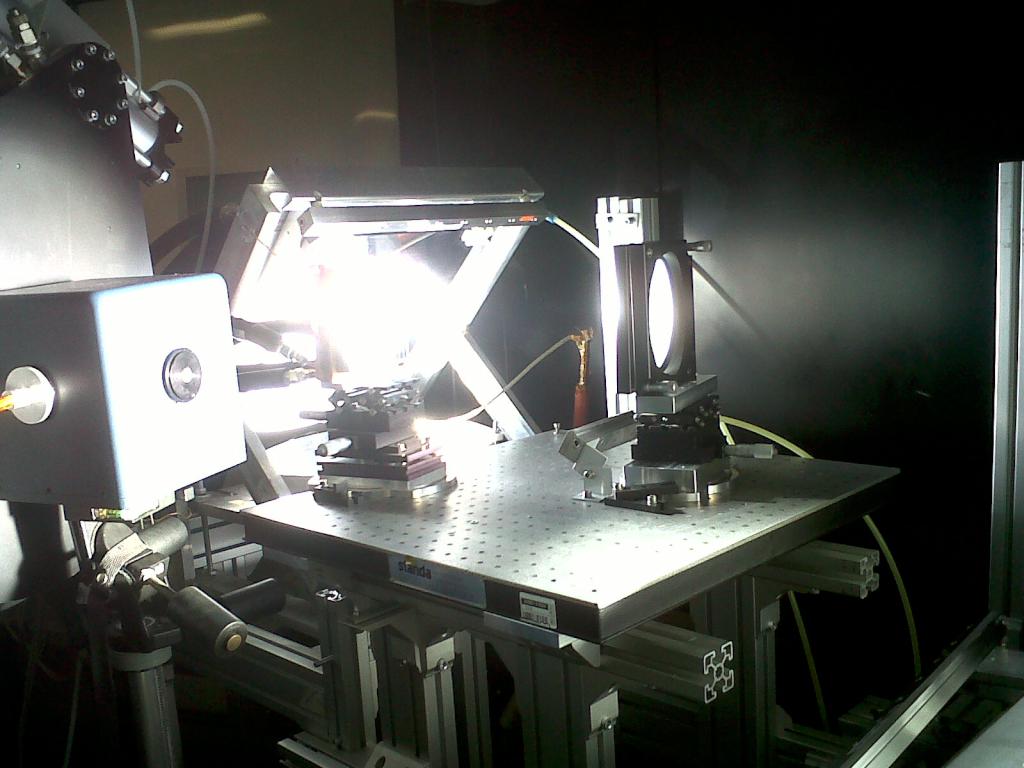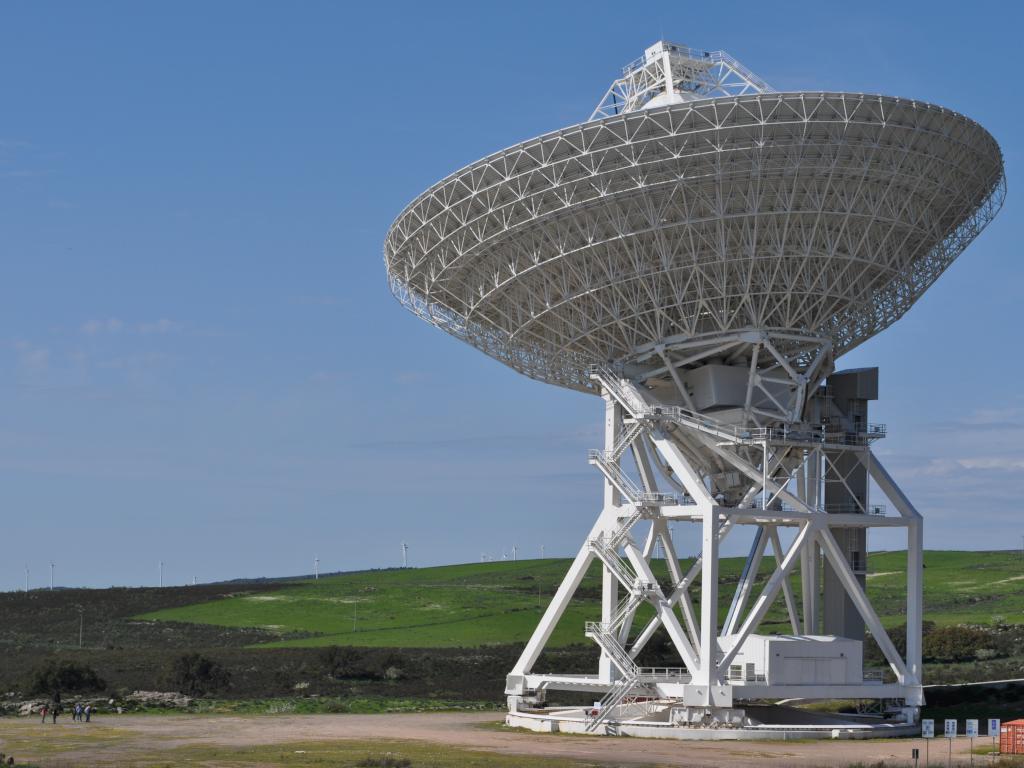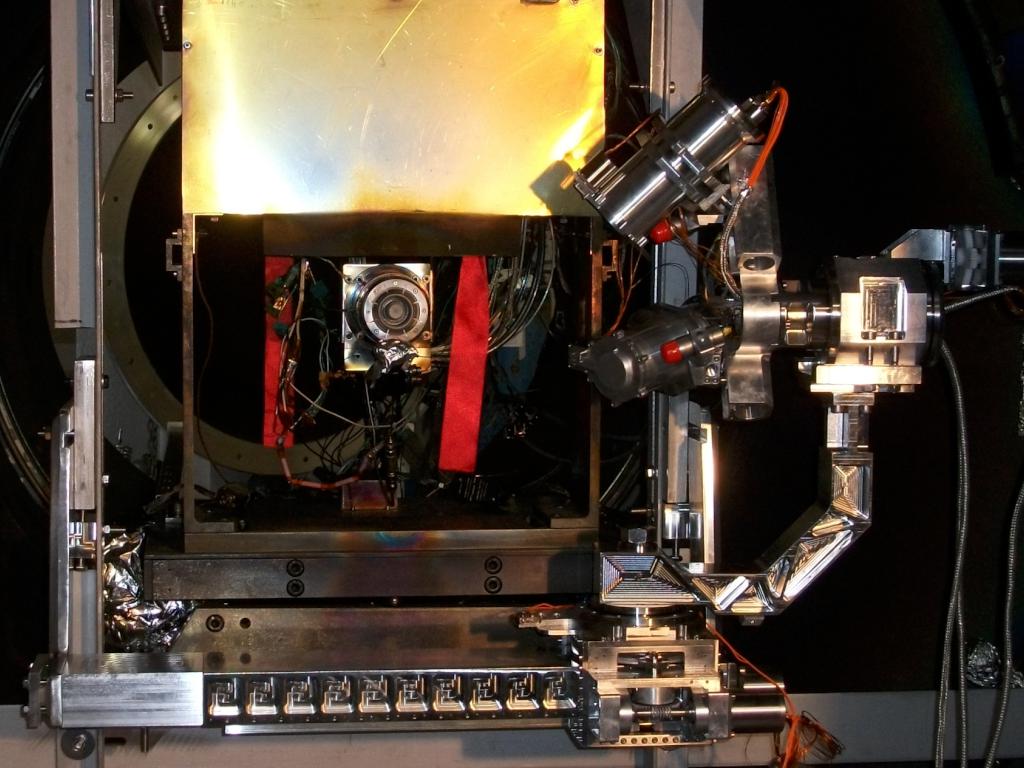VLT - Very Large Telescope - The Enclosures
Site: Cerro Paranal –Deserto di Atacama - Cile
State: completed
Activities:
Detail Design, Manufacturing, Pre-Assembly in Europe, Packing &Transport, Erection on Site, Commissioning and Testing of the four Enclosures
Partner: SEBIS Consortium
Date: 1991-2001
Client: ESO – European Southern Observatory
Category: astronomy
Credits: EIE GROUP and ESO courtesy
The VLT Enclosures
Overview:
The VLT (Very Large Telescope), is an astronomical observatory by ESO (European Southern Observatory), which comprises of four big optical telescopes, each with an 8.2m diameter primary mirror and complemented by four minor mobile units.
The four main telescopes can operate individually or as one single interferometric instrument for extra resolution or as a single large instrument capable to gather up to four times the light of a single unit.
When the VLTs were inaugurated in 1999, they were given the names of objects in the sky in the Mapuche native language:
Antu (Sun)
Kueyen (Moon)
Melipal (Southern Cross)
Yepun (Venus)
As of today, the four VLTs are among the biggest telescopes around the world.
The main characteristics of the VLT Enclosures:
Each VLT enclosure has been designed to protect the telescope against adverse weather conditions, dust, lightnings and to preserve its thermal environment, when in closed configuration.
Furthermore, its open configuration allows the telescope a free field of view by means of two slit doors. At the same time the enclosure provides wind protection and the right amount of ventilation and air circulation in the enclosure.
The enclosure is a cylindrical-shape steel structure. Both roof and facades are covered with weather-tight and thermal insulating panels.
Each of the four enclosures has a fixed cylindrical part and an upper rotating cylindrical part (Dome).
The fixed part surrounds the lower part of the telescope and it is provided with a main mirror door to allow the 8.2 m diameter M1 cell to be taken out for maintenance, as well as some large ventilation doors.
The rotating part is a dome provided with two observing slit doors operated by two gear motors each.
The observing slit is equipped with a windscreen composed of horizontal sliding elements and these mobile components are equipped with motorized flaps to regulate air flow permeability. In addition, some louvers are installed in the walls around the circumference of the dome.
The dome has the same rotation axis as the telescope azimuth axis and is able to rotate independently from the telescope, without any physical interference in any position of the telescope.
The enclosure is also provided with: anti-seismic devices, motorized AZ cable wrap, locking pins, HVAC system, lighting system, pneumatic system for the AZ inflatable seal, smoke detection and fire alarm system, ladders, lift, platforms and walkways allowing access to all telescope and enclosure levels, crane and handling facilities for the lifting and transporting of instruments/mechanisms.
Read Prof. Harry Van Der Laan – ESO DG at the time of the VLTs account
prof.-h.van-der-laan
The Science with VLT:
The VLT telescopes are equipped with a series of instruments permitting observations to be performed from the near-ultraviolet to the mid-infrared, thus a large portion of the light wavelengths accessible from the surface of the Earth. The VLTs are considered refined instruments capable to obtain higher resolution images than the Hubble Space Telescope.
The following observations are possible with the VLTs:
• Observing high redshift galaxies;
• Stars formation;
• Exoplanets and Protoplanetary Systems observations.
Thanks to the observations performed with the VLTs, scientists and astronomers have been able to capture the first images of an extra-solar planet, they could track individual stars moving around the supermassive black hole at the centre of the Milky Way and they observed the furthest known Gamma-Ray Burst afterglow.
Links to ESO’s VLT web pages:
http://www.eso.org/sci/facilities/paranal/telescopes/ut.html
http://www.eso.org/public/teles-instr/vlt/
















